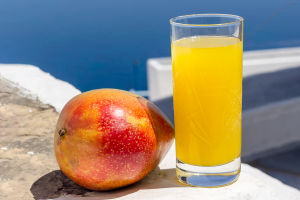Ships operate in various corrosive environments, making their different parts susceptible to distinct external effects.
Consequently, the performance requirements for paints used on ships are both diverse and demanding.
Ship anticorrosive painting is generally divided into five main sections, each necessitating a slightly different paint scheme according to its specific needs. Manufacturers tailor these schemes based on the unique requirements of different users to ensure that marine paint remains durable and safe. This article introduces the guidelines for using anticorrosive coatings on ships, detailing the appropriate paints for each section.
1. The Bottom Part of the Ship
The bottom part of a ship is constantly submerged in water, making it highly susceptible to corrosion and fouling. For this reason, the maintenance primer typically used is iron red epoxy antirust paint. This is followed by a general-purpose epoxy intermediate paint, and finally, a self-polishing antifouling paint as the topcoat. This combination provides robust protection against rust and marine organisms that attach to the hull.
2. The Waterline Part
The waterline part of the ship is where the hull meets the water surface, an area prone to severe wear and tear. The maintenance primer used here is also iron red epoxy antirust paint. The primer layer is applied using general-purpose epoxy antirust paint, while the topcoat consists of epoxy waterline paint. These paints offer enhanced resistance to the harsh marine environment at the waterline, preventing both rust and algae growth.
3. The Dry Part of the Ship
The dry part refers to the sections of the ship that remain above water and are exposed to the atmosphere. For these areas, the general primer used is iron red epoxy antirust paint. The intermediate layer is a general epoxy intermediate paint, and the topcoat is an epoxy topcoat. This paint system protects the dry parts from atmospheric corrosion and UV radiation, maintaining the structural integrity and appearance of the ship.
4. The Main Deck Area
The main deck of the ship faces constant foot traffic and exposure to harsh weather conditions. To protect this area, the maintenance primer used is iron red epoxy antirust paint. This is followed by a general-purpose epoxy intermediate paint, with an epoxy topcoat as the final layer. This combination ensures that the deck remains durable, safe, and aesthetically pleasing.
5. The Pilothouse Part
The pilothouse is crucial for navigation and is subjected to varying environmental conditions. The paint scheme for this part includes iron red epoxy antirust paint as the maintenance primer, general epoxy intermediate paint as the primer, and an epoxy topcoat as the final layer. This setup ensures that the pilothouse remains in optimal condition, protected from rust and environmental damage.
Importance of Proper Paint Use
The use of appropriate paint on ships plays a crucial role in reducing rust and corrosion, prolonging the service life of machinery and equipment, and enhancing the ship's appearance. It is a primary responsibility of the ship's crew, especially the deck department, to manage and maintain the paintwork effectively.
To utilize paint effectively, crew members must understand and master the types and properties of marine paint. Supervisors, in particular, should have thorough knowledge to ensure proper application. When a ship leaves the factory, the paint supplier usually provides a product safety technical manual detailing the use of various types of paints, potential dangers, and first aid measures in case of accidents. They also provide a schematic showing which paint to use in different positions. Deviating from these guidelines can result in chemical reactions between incompatible paints, leading to issues like dry cracking and peeling of the hull's surface.


